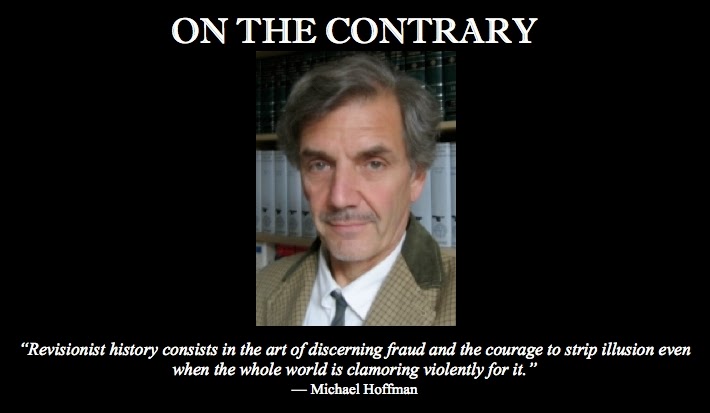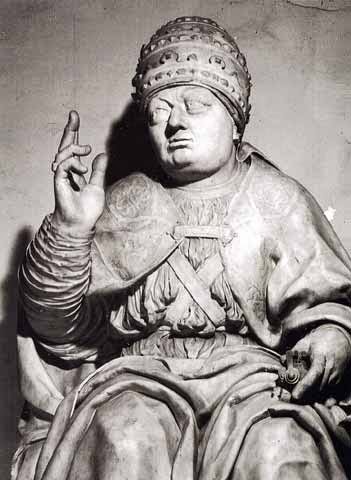
Did The Modern Global Money Matrix Begin 500 Years Ago With A Medici Pope?
500 years ago the Pope of Rome made possible the beginning of the rule of the Money Power over the West
By Michael Hoffman
www.revisionisthistory.org
Medici Pope Leo X
On May 4 1515, the 500th anniversary of which was this month, Medici Pope Leo X (Giovanni di Lorenzo de’ Medici), issued a papal bull permitting interest on loans of money if the loans were to the poor. This revolutionary permission was granted for so-called charity banks, which were known as Monte di Pieta, which translates as “mountains of compassion,” but quite a bit of the revenue ended up in the hands of the Medici bankers, not the poor, and even if these usury banks had been operated for the alleged benefit of the indigent alone, they were violating God’s law and creating a precedent for more usury.
Pope Leo X initiated a process of gradualism, whereby the Church’s immemorial dogmatic law against the charging of interest on loans of money was incrementally relaxed and diluted, leading to a papal revolution — the complete abolition of all ecclesiastical penalties for usury by Pope Pius VIII in his revolutionary bull of Aug. 18, 1830, Datum in audientia — as well as the absence of all such penalties in the 1917 and 1983 Codes of Canon Law.
The thesis of this writer’s book,
Usury in Christendom: The Mortal Sin that Was and Now is Not, is that the Renaissance Roman Church parted ways with the Church of All Time. It trafficked in fake relics and indulgences as supervised by the Fugger bankers of Augsburg. The Fuggers, with the support of the Hapsburgs, were far wealthier than any single Italian banking dynasty, including the Medici. Did you ever even hear of the Fuggers? Did you know that grievances over their operations were a motive for Martin Luther’s rebellion? The Fuggers controlled the transfer of revenues from the German Church to the papacy. Their loans to the pope brought them a portfolio of revenue-collecting privileges, including from the sale of indulgences.
In 1519 the Fuggers bought the election of Spain’s Charles V as Holy Roman Emperor. Of the 851,000 Rhenish Florins raised to purchase the office for King Charles, the Fuggers contributed 543,000 florins. They were usury bankers to the popes and to the House of Hapsburg. In September 1514, eight months before Leo X’s relaxation of the usury ban, papist theologian Johannes Eck of Ingolstadt, Luther’s nemesis, served as the corrupt mascot for the Money Power, as personified by the banker Jakob Fugger. Eck argued in a debate at the Carmelite monastery in Augsburg, that loan contracts at five percent interest were justified.
Is it a coincidence that Medici Pope Leo X issued his papal bull “Inter multiplicis” allowing for the interest-charging Montis Pietatis, the very next year? The pontiff anticipated the unpopularity of his bull and therefore threatened to excommunicate every Catholic who spoke against his gradualist overthrow of the magisterial dogma, by his relaxation, in the name of charity, of the immemorial proscription against all interest on loans of money.
Apologists for Leo X put forth a loophole for his exoneration: they quibble that he did not actually change the dogma on usury, just the pastoral application of the dogma. Yes, that’s true, and it was precisely these “pastoral” means which were employed gradually over the centuries from May 4, 1515 onward, to transform usury from a mortal sin to no sin at all.
This “pastoral” technique for nullification of the Law of God should be familiar to all students of the devious tactics of revolutionary change agents, among whom the most notable contemporary example is the current pontiff, Pope Francis, the spiritual heir of Giovanni di Lorenzo de’ Medici.
Adherents of the Church of Rome often scapegoat Protestant leader John Calvin for being the first to initiate the usury plague. Calvin was not yet six-years-old when Pope Leo X issued Inter multiplicis.
No pope after Leo X restored the true Catholic Church’s immutable dogma. Every subsequent pope either did nothing or extended the incremental permissions. Toothless anti-usury bombast from Leo XIII and other popes served to camouflage the devious, gradualist process at work. (Benedict XIV’s masterpiece of dissimulation, Vix Pervenit, advertised as a monumental anti-usury jeremiad, contains a sly loophole for the continuation of usurious operations. “Catholic” usury banks continued to flourish in the wake of Vix Pervenit).
The Cryptocracy uses similar tactics in different situations. If we study the methods and double talk by which Thomas Cromwell and Thomas Cranmer began to dissolve Catholicism in England in the 1530s we will observe the methods and double talk by which every pope from Leo X to Pius VIII and onward, dissolved Almighty God’s bulwark against the Money Power (Luke 6: 34-36).
On May 4, 1515 situation ethics began its reign over Rome. After 500 years it is time to face the truth about the Renaissance papacy and its successors. To fail to do so is to ensure that God’s Law and His Church remain occluded and marginalized, while the Money Power’s most devastatingly effective tool continues to destroy the abundant life that is our heritage as heirs of Jesus Christ. The love of money is the root of all evil. Usury is the weaponization of that love. All subsequent evils which have beset us emanate from this greatest of all iniquities.

